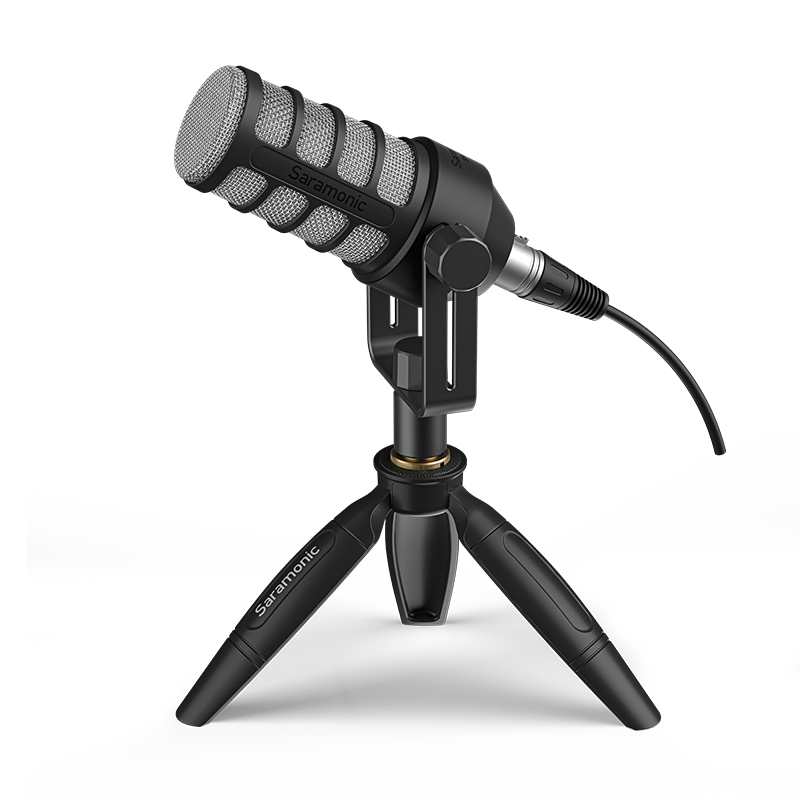Unlock Your Sound: The Ultimate Studio Microphone Showdown You Can't Miss!
Choosing the right studio microphone is crucial for achieving high-quality sound and meeting your recording needs, whether you're a budding musician, a seasoned podcaster, or a voiceover artist. The right microphone can elevate your recordings, capturing the nuances of your voice or instrument in ways that make a significant difference. This article aims to guide you through the maze of options available in the market. We'll compare and evaluate various studio microphones, breaking down their features and benefits to help you make an informed purchase decision.

Understanding Studio Microphones
Studio microphones are essential tools in the world of audio production. They serve as the bridge between the sound source and the recording medium, translating vibrations into audio signals that can be manipulated and reproduced. The most common types of studio microphones include dynamic, condenser, and ribbon microphones, each with distinct characteristics and applications. Dynamic microphones are known for their durability and ability to handle high sound pressure levels, making them ideal for live performances and louder sound sources. Condenser microphones, on the other hand, are favored for their sensitivity and wide frequency response, making them perfect for studio vocals and acoustic instruments. Ribbon microphones, while less common, offer a unique warmth and natural sound, often sought after for specific recording scenarios. Each type plays a vital role in the recording process, and understanding these differences is the first step in selecting the best studio microphone for your needs.
Key Factors to Consider When Choosing a Studio Microphone
When selecting a studio microphone, there are several key factors to consider that directly impact sound quality and usability. First, sound quality is paramount; you'll want a microphone that accurately captures the nuances of your voice or instrument. Frequency response describes how well a microphone can pick up different frequencies, and a wider range is often better for vocals and instruments. Sensitivity indicates how effectively a microphone can convert sound waves into electrical signals, which is particularly important for quiet sources. Polar patterns, which define how a microphone picks up sound from different directions, also play a vital role in your choice. For instance, a cardioid polar pattern is ideal for isolating sound from a specific source, while omnidirectional microphones capture sound from all directions, making them suitable for group recordings. Finally, consider your intended use—whether you're recording vocals, instruments, or podcasts—each application may require a different approach to microphone selection.
Comparative Analysis of Popular Microphone Types
Let’s delve deeper into the three main types of studio microphones: dynamic, condenser, and ribbon, to understand their advantages and disadvantages in various recording scenarios. Dynamic microphones are robust and versatile, making them ideal for both live performances and studio recordings. They excel at handling high sound pressure levels, making them perfect for loud instruments like drums and electric guitars. However, they might not capture the subtle nuances of softer sounds as effectively as other types. Condenser microphones are often the go-to choice in studios due to their sensitivity and expansive frequency response. They are excellent for capturing vocals and acoustic instruments, but they can also be more delicate and require phantom power to operate. Ribbon microphones provide a warm and natural sound, often favored for their vintage character. They are particularly good for recording string instruments and brass, but their fragility means they require careful handling and specific recording conditions.
Dynamic Microphones
Dynamic microphones are characterized by their ruggedness and ability to handle high sound pressure levels. They are typically used in live settings, but they have their place in the studio as well. These microphones are known for their reliability and can often withstand rough handling, making them a favorite among performers. They work best with louder sound sources, such as electric guitars and drums, where they can capture the energy without distortion.
Condenser Microphones
Condenser microphones are celebrated for their sensitivity and wide frequency response, making them ideal for studio recordings. They are particularly effective for capturing vocals and acoustic instruments, as they can pick up subtle details that dynamic microphones might miss. However, they are generally more delicate and require phantom power, which can be a consideration in your setup.
Ribbon Microphones
Ribbon microphones are known for their smooth, warm sound and are often used in professional studios. They excel at capturing a natural tone, especially with brass and strings. However, because they can be more fragile and typically have lower output levels, they are less common for live performances and require careful handling.
Making Informed Choices in Microphone Selection
In summary, selecting the right studio microphone requires a careful consideration of your specific recording needs and personal preferences. Each type of microphone offers unique features that cater to different applications. Whether you’re drawn to the ruggedness of dynamic microphones, the sensitivity of condensers, or the warmth of ribbons, understanding these factors will guide you toward making an informed choice. If possible, always test microphones in person to get a feel for their sound and how they interact with your voice or instrument before making a purchase. Your ideal microphone is out there, waiting to unlock your sound!
Choosing the Right Studio Microphone for Your Needs
Understanding the different types of studio microphones and their respective features is essential for making an informed decision when it comes to your audio needs. By considering sound quality, intended use, and the characteristics of each microphone type, you can discover the best studio microphone that aligns with your goals. Don't hesitate to explore various options and test them out. The perfect microphone can significantly enhance your recordings, so take your time to find the one that truly resonates with your sound.









